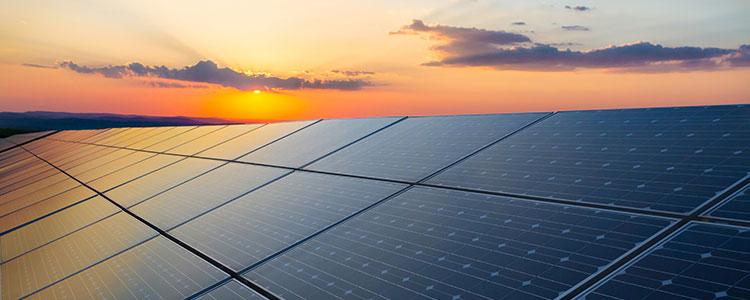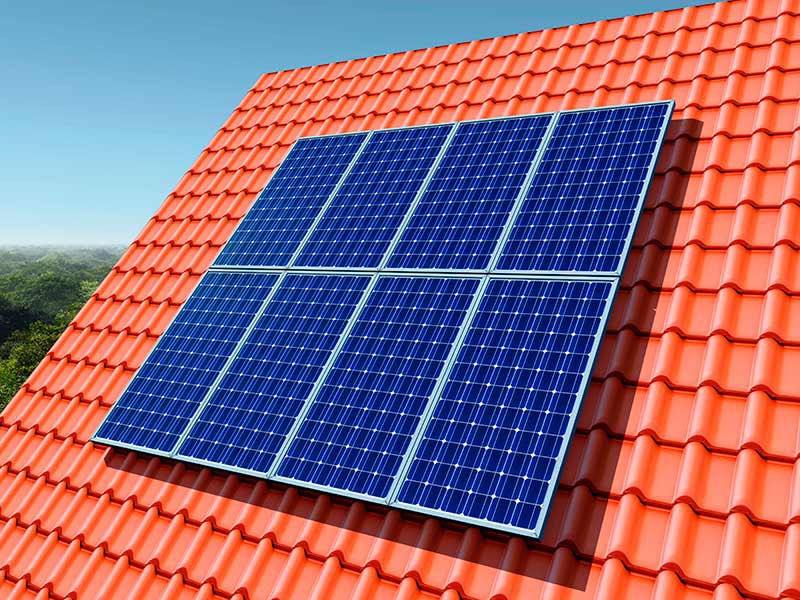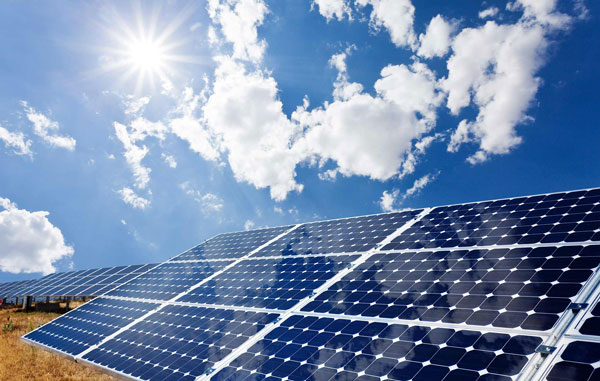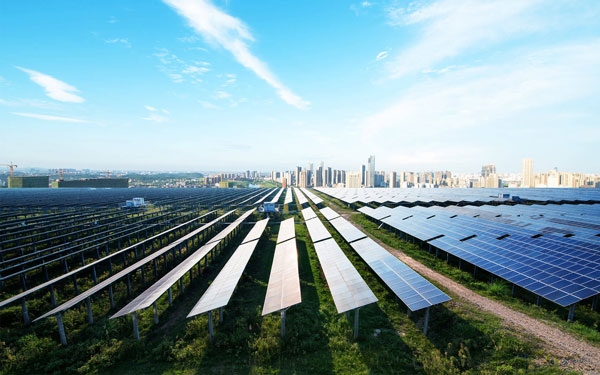To prevent solar panel damage, select durable materials, assess structural integrity, implement weather protection, conduct regular inspections, and make timely repair or replacement decisions.

Durable Material Selection
Proper choices of material are crucial in keeping solar panels functional, as well as from breaking down under environmental stresses. This works to select elements that will perform under harsh environmental conditions and physical stresses.
High-Quality Solar (PV) Cells
- Use the most efficient cells: You will want monocrystalline silicon cells because they last a long time, and are also polycrystalline and provide everything you need to convert light into energy. Monocrystalline is a type of cell that is more preferable because it has long lifespan and less performance degradation over time. Performance of such cells can be maintained for at least 25 years (or more).
- Additional protection: Be it with anti-reflective coatings to increase the light absorption and reduce losses or protective coatings impeding UV rays and weather wear. They can lengthen the duration of solar cells by protecting material from being broken down under harsh environmental elements.
Durable Panel Frames and Mounting Systems
- Go with anodized aluminum frames: It is in your best interests to have those pipes be part of anodized aluminum frames due to their rust-resistance and overall structural soundness. Anodizing improves the natural corrosion resistance of aluminum, which makes it especially well-suited for solar panel frames exposed to a range of different environments.
- Choose stainless steel fasteners: The strength and corrosion resistance of stainless steel fasteners are critical to this, especially when exposed to environments where high humidity, salt content in the atmosphere or conditions are corrosive, thus capable of causing degradation. These materials are used to ensure the safety and longevity of the structural portions of solar installations.
Thermoplastic Glass and Lamination
- Utilize tempered glass: Use tempered glass for the panel coverings to improve robustness. Temper glass is engineered to withstand hail and other debris, greatly reducing chances of breakage. It is also good for heavy snow loads, so it can be installed in colder regions.
- Use good quality encapsulants: One should select high-quality encapsulants like and e.g.Ethylene-Vinyl Acetate (EVA) that reinforces tightly the PV cells into the panel. This is crucial as the materials are what give the battery boxes durability against moisture through ingress, which could lead to cell failure, and protection against thermal expansion and contraction from temperature fluctuations.
Structural Assessment
For this reason, it is important to carry out a comprehensive structural check prior to solar panel installations for the long term stability and safety. This method assess the soundness of the installation site, the mounting system used and the large solar panel system to cope up with external pressures and load requirements.
Evaluation of Site for Installing
- Geotechnical Evaluation: A geotechnical evaluation of the soil/terrain for system ground stability should be performed before the system is installed. This evaluation is crucial for imagining the sort of Foundation and mounting structure required to grow solar panels can be based safely over its operational life.
- Wind load Analysis - Determining the extent of the wind flow in the geographical location is crucial. Also, regions that are commonly windy need to rate the mounting systems and panels to withstand the expected wind speeds of the area. For hospitals in hurricane-prone areas, this means ensuring solar installations can withstand winds above 160 mph.
Mounting Systems Inspection
- Material durability: It is necessary to assess the corrosion resistance of materials used for mounting systems, especially in salty or humid climates. They are then replace by stainless steel or galvanised steel for long live and strong.
- Connection Points: Inspect bolts, nuts, and other connection points on a regular basis to ensure they are tight and free of corrosion. Rust or loosening should be acted on immediately, as to ensure it does not degrade so much that structures fail.
Examination of Solar Panel Frame and Support
- Check the solar panel frames for bending or rust. If there is a problem with the frame then it may cause the solar panels to not work as well because it reduces their overall stability and performance.
- Proper alignment with support structure: All the support structures. Should be aligned and secured properly. Improper alignment with the eavestrough can load this system unequally and can be harmful during high winds or the weight of heavy snowfall.
Weather Protection Measures
To prevent the hazards of environmental conditions, effective weather protection has to be adopted for ensuring that solar panels are protected well. They serve to increase resistance to extreme weather such as hail, high winds or torrential rain.
Enhanced Panel Coating
- Anti-reflective, hydrophobic layers: use coatings to increase the absorption of energy and repel water & dirt, thus reducing the possibility for damages in strong rain. Hydrophobic coatings, for instance, can repel the type of water buildup that would typically manifest on the surfaces of panels by up to 90%, which should lessen the potential for damage due to moisture.
- Cover solar panels with UV-resistant layers to reduce wear and tear over the long term due to sun exposure. These layers are crucial in keeping panel efficiency and structural integrity over the years under the sun.
Structural Reinforcements
- Unlike a pretty mirror frame or pressed metal, this kind of framing is built to take a high amount of physical stress. Frames capable of withstanding wind speeds over 100 mph are usually mounted in high-wind areas to keep the system stable and avoid mechanical failures.
- Stable mounting options: Use a type of mounting platform which provides better grip and stability. This includes, in, say, hurricane-prone regions, deep-driven ground mounts or reinforced concrete bases that add extra support in the event of storms.
Protective Barriers
- Wind shields: Frame wind shields upside the solar panels so that they cannot be affected by the immediate pressure force of the wind. These works particularly well in flat, wind prone conditions due to their low-profile nature but once they are filled with sand they weigh too much thereby limiting their portability.
- Hail nets - Hail is one of the most unusual types of inclement weather that can damage solar panels. These nets are created for them to catch the blow of the hail but still to let the sunlight through.
Routine Damage Inspections
Solar panel maintenance and inspections are necessary to ensure their longevity and maintain the efficiency of your solar system. Scheduled inspections can help spot and fix minor problems before they become major damage or system failures.
Regular Inspection Schedules
- Inspection frequency: Determine at what intervals inspections should occur, depending on the environment and past experience. Spaces with lots of debris, five, or sandy conditions will probably require monthly inspections, while less exposed areas may need quarterly reviews.
- Check it during different times of the year (e.g. wet season, dry season) For instance, inspections conducted after the winter may key in on ice or snow load damage and post-summer checks could concentrate on heating damage or UV effects.
Key Areas of Focus
- Inspection of the panel surface: Check for anything that might degrade performance such as cracks, delamination or soiling on the panels. By identifying those problems early, you can avoid letting it degrade performance in the long run.
- Frame and Direct Follow-up: Assess the structural frame integrity of installed panels including mounting systems. Inspect for loose parts, oxidation, or weak structures that could be the cause of panel dislocation or failure to stay in place.
Tools and Technologies
- Solutions such as: Drones and Smart Thermal Imaging: Utilize drones to inspect hard to reach installations. Thermal drones can rapidly spot hotspots at the module level from cell defects or shadowing not visible to the human eye by using a thermal imaging camera.
- Photovoltaic (PV) module testers -Use PV module testers to test the electrical performance of modules, and guarantee that PV panels are functioning according to specified operating standards. Any large discrepancies may point to underlying problems.
Documentation and Reporting
- Keep records of inspections: Take detailed notes and photos, recording every inspection. These records are used to monitor the aging of assets and hence plan their maintenance or replacement.
- Analyzing and following up; after the collection of data, you analyze them to identify patterns or reoccuring issues. This data is then used to fine-tune maintenance schedules (e.g. with alerts, preventive measures) or protective measures in the treatment plant.
Repair or Replacement Decisions
The only way to keep your solar panel functioning well and reaching its expected lifespan is by making an appropriate decision when it sticks to repair Vs. replace the broke down solar panels. Quickly walking through the options Selecting an alternative to cable repairs requires assessment of visual damage, cost considerations and implications upon the system as a whole.

Assessment of Damage
- Visual/diagnostic inspection - detailed inspection to check the damage With the help of electroluminescence imaging, you can identify hidden cracks or damage that are not easily visible.
- Severity and location of damage: How severe the damage is, what impact it makes on the performance of the panel. Can result in a more negative performance from solar cells themselves (versus the frame, or backing film) -- e.g. damage on its own solar cells generally has a greater impact on efficiency than other issues.
Cost Comparison
- Simply, pay attention to the cost of repairs VS the cost of buying new panels Labour, materials and potentially downtime costs However, maybe if the repainting costs are more than 50% of new panels, then replacing is considered a better economics.
- Warranty cover: Check what status of warranty the solar panels come with. Certain exports can null warranties, yet panel replacements have the potential to extend warranty terms, creating long-range benefits.
Long-Term System Performance
- Lost of efficiency: Additionally, test how the damage influences the overall efficiency of the system. As a result, once repaired often some panels may never have as great a performance as they originally did, and the solar power system will not be improved to its full potential.
- The first is Technological compatibility: you will need to make sure the new panels are compatible with your existing system if thinking of replacing. This does not mean that the old-fashioned panels are less powerful, nonetheless could be specific prefer speak to you to system setup.
Environmental Impact
With Sustainability in mind: Compare cost of repair to environmental impact of disposing. Repairing makes the panels last longer and reduces waste, but if it only reduces efficiency slightly, then the extra energy use may offset these benefits.
Decision Protocols
- Develop guidance for decision-making: You must establish clear decision-making guidance - based on performance metrics, costs and environmental considerations - that will standardize the process of repairing or replacing equipment.
- Regular updates and training- keep the maintenance teams updated with the new diagnostic techniques and best practices for maintaining solar panels.



